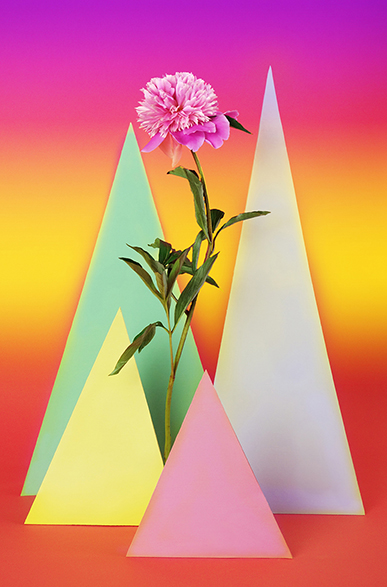
Recent work by Claire Chauvin |

Peter Saville, legendary designer of iconic 1980s album covers, once remarked of his cover
for the New Order album Power, Corruption, and Lies that “flowers suggested the means by which power, corruption, and lies infiltrate our lives.” The cover, an appropriation of an image from Henri Fantin-LaTour depicts a basket of roses in full bloom, their very floridness rife with sex (and death by extension); “whores for the bees,” as it were. But for the average, gloom-and-doom obsessed 1980s kid, Saville’s work represented membership in the tribe. The tribe of goth, the kids of Reaganomics, “Thatcher’s bloody Britain.” They were a nihilistic lot, too young for punk, too old for whatever the 90s were. It was a group fearful of the world’s end, not sure about tomorrow. But the future came and the goths went back into the shadows.
The history of still-life painting, of which the Dutch painters of the Enlightenment Age can claim total mastery, is one of capturing an image in the controlled setting of the studio, whereby the artist plays the tyrant, bending and shaping the objects of the still-life to her own will. The lighting, composition, and selection of objects all play a role in the theater of vanity, each choice reflecting a complex set of metaphorical signs. The artist subverted all of this control through the illusion of naturalism. Photographers like Karl Blossfeldt looked at the forms of nature as a language of shapes, desaturating his subjects of any color, reducing them to pure form.
To say that Claire Chauvin’s work is only about death, form, or anxiety about the future is somehow too simple. They are all of that. The continuous backdrop paradoxically suggests an endless landscape and a stiflingly closed off space. The flowers are alive, but dying. The colors are vivid, but somehow unnatural, as if some machine at the heart of an artificial intelligence is pumping out all the possibilities of color. Man-made materials meet organic forms in a naturally-lit, but saturated, unreal atmosphere. Here, as in the paintings of the Netherlandish masters, we see the ravages of time captured in an instant. The elegant curves of drooping flowers butt up against the hard edges of plastic, geometric forms. However, these images are not suggestive of an interrupted dinner party or reverie. They are too clean for that. Something vaguely alchemical lurks in the negative space, willing the viewer to discover the key to the mysteries within. Time passes through these images.
Archival pigment print, 18x12"